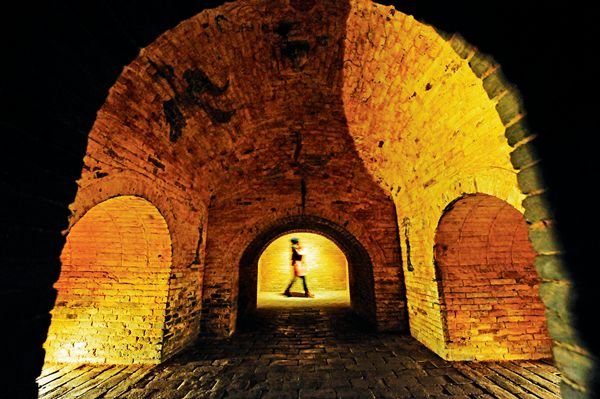Luoyang: Capital for Millennia and City of Peonies
China Today, February 8, 2017 Adjust font size:
Mysterious Heluo Culture
“He” refers to the Yellow River, regarded as the mother of the Chinese civilization and headspring of Chinese culture, and “luo” to the Luoshui River. Heluo Culture originated in their confluence.
The semi-mythical Xia Dynasty, established in the 21st century BC, was the first hereditary dynasty in Chinese history. Its imperial palace and center of activities were situated around Luoyang. China’s earliest historical documents Hetu and Luoshu were buried and excavated here.
What was the original configuration of the Hetu and Luoshu? So many millennia having passed, there is no definite answer. Historical records and other surviving relics suggest that they were produced during Luoyang’s early period of human habitation. Chinese ancients incised images of natural phenomena on tortoise shells and animal bones and heated them to see how the materials cracked around these pictograms. This was the earliest form of divination in China. The traditional classic The Book of Changes evolved from these arcane practices here in Luoyang.
|
|
|
The six-meter-deep underground Luo-yang Ancient Tomb Museum, which houses 26 ancient tombs of different dynasties from the Western Han to the Song and Jin dynasties. |
The Confucian classic The Book of Changes encapsulates the essential wisdom of Chinese ancients and is also the theoretical origin of natural philosophy and humanistic practices in China’s traditional cultures. The work has exerted profound impact on the nation’s politics, economy and culture throughout Chinese history. In early human society, Chinese ancestors, unequipped with scientific explanations for certain natural and social, as well as physiological phenomena, looked to the gods in their efforts to predict the future and so gain advantages and avoid harm. The Book of Changes was treated as a textbook that perfectly represented the will of the gods. It thus gradually transformed from a divination medium to a philosophy on the correct administration of state affairs to ensure national security. It also provided a model for appropriate human behavior and commendable characteristics.
In the late 1950s, archeologists discovered, 30 km east of Luoyang, the Erlitou Site that originated in 1750-1500 BC, a time parallel to that of the Xia Dynasty according to ancient records. They excavated everyday dwellings, palaces, potteries, copper-casting workshops, cellars, caverns and tombs. The site also contained large numbers of unearthed vessels and utensils, including stonewares, ceramics, jadeware, bronzeware, horn implements, and clamware. Among them was the three-legged, loop-handled bronze jue, the earliest known wine vessel. The Erlitou Site is believed to be the earliest imperial capital.
